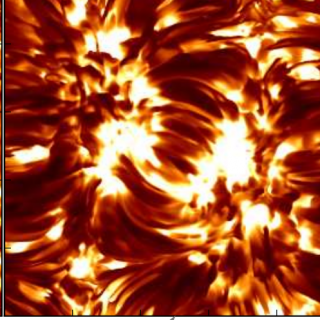Bibcode
Beck, C.; Rezaei, R.; Choudhary, D. P.; Gosain, S.; Tritschler, A.; Louis, R. E.
Referencia bibliográfica
Solar Physics, Volume 293, Issue 2, article id. #36, 24 pp.
Fecha de publicación:
2
2018
Revista
Número de citas
5
Número de citas referidas
5
Descripción
High-resolution imaging spectroscopy in solar physics has relied on
Fabry-Pérot interferometers (FPIs) in recent years. FPI systems,
however, become technically challenging and expensive for telescopes
larger than the 1 m class. A conventional slit spectrograph with a
diffraction-limited performance over a large field of view (FOV) can be
built at much lower cost and effort. It can be converted into an imaging
spectro(polari)meter using the concept of a subtractive double pass
(SDP). We demonstrate that an SDP system can reach a similar performance
as FPI-based systems with a high spatial and moderate spectral
resolution across a FOV of 100^'' ×100^' ' with a spectral
coverage of 1 nm. We use Hα spectra taken with an SDP system at
the Dunn Solar Telescope and complementary full-disc data to infer the
properties of small-scale superpenumbral filaments. We find that the
majority of all filaments end in patches of opposite-polarity fields.
The internal fine-structure in the line-core intensity of Hα at
spatial scales of about 0.5'' exceeds that in other parameters such as
the line width, indicating small-scale opacity effects in a larger-scale
structure with common properties. We conclude that SDP systems in
combination with (multi-conjugate) adaptive optics are a valid
alternative to FPI systems when high spatial resolution and a large FOV
are required. They can also reach a cadence that is comparable to that
of FPI systems, while providing a much larger spectral range and a
simultaneous multi-line capability.
Proyectos relacionados

Magnetismo, Polarización y Transferencia Radiativa en Astrofísica
Los campos magnéticos están presentes en todos los plasmas astrofísicos y controlan la mayor parte de la variabilidad que se observa en el Universo a escalas temporales intermedias. Se encuentran en estrellas, a lo largo de todo el diagrama de Hertzsprung-Russell, en galaxias, e incluso quizás en el medio intergaláctico. La polarización de la luz
Ernest
Alsina Ballester